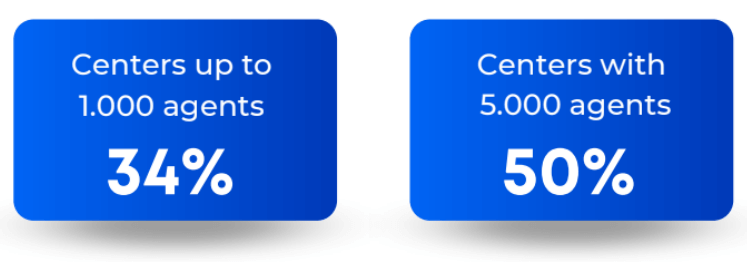Revolutionizing the Automotive Industry Through Customer Experience (CX)
Within the rapidly changing automotive industry, driven by both consumer preferences and technical improvements, one component in particular stands out as a critical success factor: customer experience (CX).
The caliber of consumer interactions with automotive brands, from the time a vehicle is purchased to the continuous maintenance and assistance it receives, is crucial in determining the perception, loyalty, and, eventually, the success of the brand. In this blog post, we’ll explore the significance of CX in the automotive industry and how forward-thinking companies are revolutionizing their approach to meet the evolving needs of today’s consumers.
Understanding the Importance of CX
Gone are the days when consumers made purchasing decisions solely based on product features and price. Today, the overall experience a brand delivers holds equal, if not more, weight in the decision-making process. In the automotive industry, where the stakes are high and competition fierce, providing exceptional CX has become imperative for staying ahead of the curve. It’s no longer just about selling cars; it’s about building relationships, fostering trust, and delivering value throughout the entire customer journey.

Enhancing the Buying Experience
The automotive purchase journey can be complex and daunting for consumers, often involving extensive research, showroom visits, and negotiations. Recognizing this, leading automotive brands are investing heavily in streamlining the buying experience, both online and offline. From intuitive website interfaces and virtual showrooms to transparent pricing models and personalized assistance, companies are leveraging technology and data analytics to make the car-buying process more convenient, transparent, and enjoyable for customers.

Transforming Ownership Experience
However, the customer journey doesn’t end at the point of sale; in fact, it’s just the beginning. The ownership experience plays a crucial role in shaping long-term brand perception and loyalty. Here, automotive brands have a unique opportunity to differentiate themselves by providing exceptional post-purchase support, maintenance services, and ongoing communication. Whether it’s proactive vehicle maintenance reminders, seamless scheduling of service appointments, or timely resolution of customer inquiries, every interaction is an opportunity to delight and retain customers.
Embracing Digital Innovation
In today’s digital age, where connectivity and convenience are paramount, automotive brands are embracing digital innovation to elevate the CX to new heights. From connected car technologies and mobile apps to predictive analytics and AI-driven chatbots, companies are leveraging cutting-edge technologies to anticipate customer needs, deliver personalized experiences, and forge stronger connections with their audience. Whether it’s providing real-time vehicle diagnostics, offering remote vehicle control features, or delivering tailored content and offers, digital solutions are redefining the automotive CX landscape.
Conclusion
In dynamic and competitive environments such as the automotive sector, delivering exceptional CX is no longer a luxury but a necessity for survival. By prioritizing customer needs, embracing digital innovation, and reimagining every touchpoint along the customer journey, automotive brands can not only differentiate themselves in the market but also foster lasting relationships with their customers. Whether it’s enhancing the buying experience, transforming the ownership journey, or leveraging data-driven insights to drive continuous improvement, the opportunities to revolutionize the automotive CX are endless. As we look towards the future, one thing is clear: those who prioritize CX will emerge as the true leaders in the automotive industry.

STRATEGY GUIDE
6 Simple Strategies To Improve Customer Retention
Actionable insights and proven techniques to keep your customers coming back.

FrontLogix delivers exceptional CX for its automotive customers by prioritizing personalized interactions, streamlined processes, and innovative solutions. Through meticulous attention to customer needs and preferences, FrontLogix ensures that every interaction, from initial inquiries to post-purchase support, is tailored to enhance the customer experience. FrontLogix optimizes every touchpoint along the customer journey, providing seamless navigation, transparent communication, and timely resolution of inquiries. We go above and beyond to exceed customer expectations, foster loyalty, and drive long-term success in the automotive industry.
Visit our website at frontlogix.com to learn more.

Found this useful?
Subscribe to our newsletter and get CX and WFM news delivered to your inbox.
Don’t worry, we won’t flood your inbox – just one insightful email a month!





























